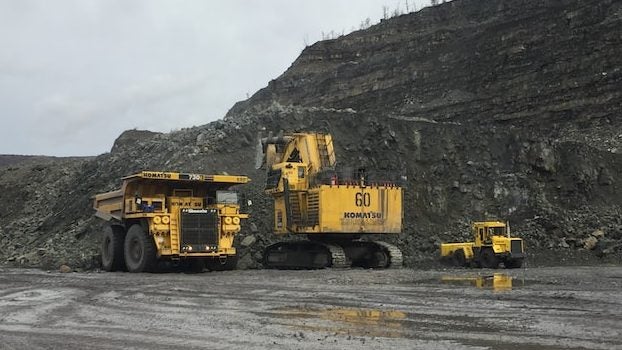Buckingham Planning Commission has questions on mining rules
Published 6:49 pm Wednesday, February 22, 2023
|
Getting your Trinity Audio player ready...
|
DILLWYN – Before approving a recommendation to ban metallic mining, the Buckingham Planning Commission wants a few things cleared up. Earlier this month, Buckingham supervisors put together a proposal to eliminate the practice as an allowed land use across the county. But that’s not something supervisors can just approve. First, it has to go before the planning commission. And before they hear the case next week, commission members said they want a few things defined.
“It would be nice to have the definitions and have a little bit more information,” said Planning Commission Chairman Joe Bickford. “At that point we can move it on to a public hearing or table it.”
Bickford and other members want to clearly understand what types of mining qualify under a “metallic” ban and which ones would still be allowed.
“I just think we need to make sure we get it specific enough so that we’re not handcuffed in some of the industries already in the county,” said Planning Commission member Peter Kapuscinski.
What’s currently allowed
Currently in Buckingham County, mining is allowed in two districts. In Buckingham’s zoning, manufacturing districts are labeled as M-1 or M-2. In the M-1 districts, commercial core drilling is allowed by right. That means a company can drill without requesting a special use permit. Mining of any type is also allowed in the M-1 district by permit, which means the company comes before the Buckingham planning commission and supervisors and makes the request. In the M-2 district, mining is just allowed, with no permit needed.
Buckingham has two areas right now where that’s in effect. One is on Route 15 and the surrounding area near Dillwyn, where the Kyanite Mining Corporation is working. The second is also on Route 15, just off Bridgeport Road in the Slate Quarry area. There is no metallic mining happening in either area. But planning commission members see trouble ahead, unless the county is very specific about their new rules.
“I don’t want to contradict ourselves,” said Kapuscinski. “If we say something about (banning) metallic mining and then turn around and (allow) mining (in the comprehensive plan), I can see a court case coming up.”
And it’s not as simple as just banning all mining in the county, as staff warned that could damage existing operations.
“If you were to actually remove mining from (the) M-2 zoning district, any expansion that either one of those landowners (want), they (wouldn’t be able) to do that by right,” said Buckingham Zoning Administrator Cheryl Edmondston. “If they wanted to expand and you removed mining, they’d have to ask for a special use permit.”
The concern is that any proposed expansions would be delayed or canceled if a company had to wait months for a special use permit to be approved.
Buckingham Planning Commission set to decide
The county staff has been asked to provide a definition for metallic mining. Next week, the planning commission will be asked if they have enough information to hold a public hearing on the proposal. The hearing itself would take place then in March.
But these discussions don’t change the plans of the one company doing prospecting in Buckingham. There is currently no gold mine operating in the area, but in April 2019, the Canadian prospecting company Aston Bay Holdings announced they were beginning to search for minerals.
Now as a prospecting company, they search for gold, silver or other minerals, identify and purchase a location, then sell that information (and property) to the highest bidder. They can do this because under Virginia law, prospecting doesn’t require a state permit if you’re searching for anything other than uranium. At the beginning of 2020, the company secured the right to prospect on 4,953 acres of land in Buckingham County. They do not, however, outright own the land. In each case, they’re working with, and negotiating the rights from, local landowners. And that number is constantly changing as some areas pan out and others don’t. Currently, that number stands at 2,500 acres.
Aston Bay plans to keep working
Aston Bay CEO Thomas Ullrich said his company plans to keep working with Buckingham landowners, regardless of what local officials do.
“The local landowners have the right to investigate the considerable economic potential of their lands,” Ullrich said. “They have engaged Aston Bay to help in that exploration, so we continue to do so. If the county decides to remove that right, then that is a takings issue for the landowners to pursue. The landowners will let us know how to proceed.”
A “takings issue” is a legal term. In the 1922 case Pennsylvania Coal Co. v. Mahon, the U.S. Supreme Court established what’s known as the regulatory takings doctrine. It states if government, local or state, restricts the use of land without a physical occupation or appropriation, it can trigger a Fifth Amendment right to compensation. Now to be clear, that’s not automatic. A court would still have to determine if the situation applies.






